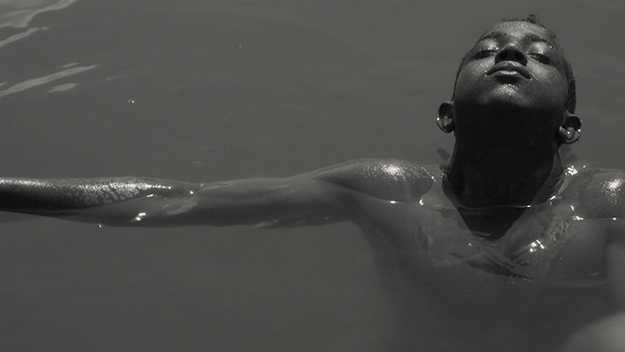Film Comment Recommends: Faya Dayi
This article appeared in the September 2 edition of The Film Comment Letter, our free weekly newsletter featuring original film criticism and writing. Sign up for the Letter here.

Faya Dayi (Jessica Beshir, 2021)
Jessica Beshir’s Faya Dayi opens with a boy zigzagging across muddy terrain on a foggy night in Harar, Ethiopia, his arms mimicking the wings of a bird or a plane. Many of the denizens of Harar, as observed by Beshir in her feature-length documentary debut, yearn to leave—to fly away. Ethnic cleansing, land grabs, and limited employment trammel the dreams of many youths in the walled city. One boy eagerly tells his friend about a boat that takes you to Egypt for 30,000 birr, and to Europe for another 50,000.
Or, alternately, you can escape into euphoria by chewing khat, a stimulant integral to ancient social customs, and the rural city’s all-pervasive cash crop. From the opening shot, Beshir cuts to two elders crouching in a hazy room: one of them pestles khat leaves, while the other smokes them, musing, “Humans can only see physical appearances, but can we tell what’s on the inside?” Faya Dayi, a hypnotic montage of the people, nature, and Sufi parables that surround the khat trade, imagines what Harar might look like if we could.
In an interview with Matt Turner for Filmmaker Magazine, Beshir recalls the colorful Harar where she grew up, full of fields of sorghum, coffee, and other crops. “I started to realise that all of those colors had gone, replaced by this green blanket of a single crop, khat,” she says. Shooting in black and white, Beshir makes this change indiscernible, and tries to capture the essence of the city and its rituals of khat beyond the dependent monoculture wrought by globalization. Beshir’s lens is elusive, often thwarting connection: whenever someone in the film begins to crystallize, her camera wanders elsewhere. Eschewing historical context and exposition of Ethiopia’s ongoing genocide, her expressive, slow-motion portraiture instead captures a perpetual inertia. Mothers await sons who never return, and children await the means to reunite with parents who’re abroad. The only thing that seems to actually move in the city is khat. When it finally arrives at the market, Beshir briefly broadens the scope of her film to include images of interregional trade and traffic, and talk of a working-class uprising, before returning her gaze to the seemingly endless drift of daily life in Harar.







